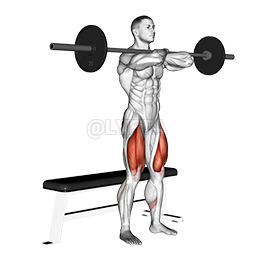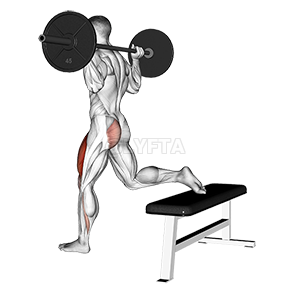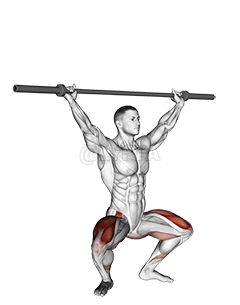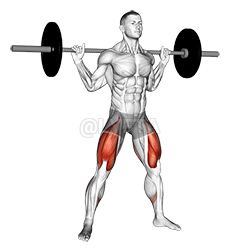
Bench Squat
Exercise Profile
Related Exercises:
Introduction to the Bench Squat
The Bench Squat is a strength training exercise that primarily targets the muscles in your legs, glutes, and core, while also improving overall body balance and coordination. It's an excellent workout for both beginners and advanced fitness enthusiasts as it can be modified to match any fitness level. Incorporating Bench Squats into your routine can enhance lower body strength, promote better body alignment, and contribute to improved performance in other physical activities.
Performing the: A Step-by-Step Tutorial Bench Squat
- Begin to lower your body towards the bench by bending at the knees, keeping your chest up and your back straight.
- Once your glutes touch the bench, pause for a moment, ensuring that your knees are directly above your ankles.
- Push through your heels to lift your body back up to the standing position, fully extending your legs.
- Repeat this process for your desired number of repetitions, ensuring to maintain good form throughout.
Tips for Performing Bench Squat
- **Avoiding Common Mistakes**: One common mistake is not going low enough. Aim to lower your hips until they're at least parallel with your knees. Another mistake is letting your knees cave inwards. Push your knees out to keep them in line with your feet. Lastly, avoid lifting your heels off the ground. Keep your feet flat to maintain balance and prevent injury.
- **Breathing Technique**: Proper breathing is crucial for bench squats. Inhale deeply before you lower your body, hold your breath while you're in the squat position, and exhale as you push yourself back up. This
Bench Squat FAQs
Can beginners do the Bench Squat?
Yes, beginners can certainly do the bench squat exercise. It's actually a great exercise for beginners because it helps to teach proper squat form. The bench gives a reference point to aim for in the lowering phase of the squat, which can help prevent going too low and potentially causing injury. As with any new exercise, beginners should start with light weights or even just body weight, and gradually increase as strength and confidence improve. Always remember to maintain proper form to prevent injuries.
What are common variations of the Bench Squat?
- The Goblet Squat: In this variation, you hold a dumbbell or kettlebell close to your chest, which can help to engage your core and improve your stability.
- The Box Squat: This variation involves sitting back onto a box or bench before standing up, which can help to improve your form and reduce the risk of injury.
- The Bulgarian Split Squat: This variation involves placing one foot on a bench behind you, which can help to increase the intensity of the exercise and target your quads and glutes.
- The Overhead Squat: In this variation, you hold a barbell above your head, which can help to improve your shoulder flexibility and core strength.
What are good complementing exercises for the Bench Squat?
- Lunges are a great complementary exercise to Bench Squats because they target the same major muscle groups such as the quads, glutes, and hamstrings, but also challenge balance and stability, enhancing overall functional fitness.
- Overhead Presses complement Bench Squats by strengthening the upper body, particularly the shoulders and arms, which can improve your stability and power during the squat movement.
Related keywords for Bench Squat
- Barbell Bench Squat
- Hip Strengthening Exercise
- Bench Squat Workout
- Barbell Squat for Hips
- Lower Body Fitness
- Strength Training Squat
- Gym Exercise Bench Squat
- Barbell Hip Exercise
- Weightlifting Squat Routine
- Bench Squat Hip Workout









